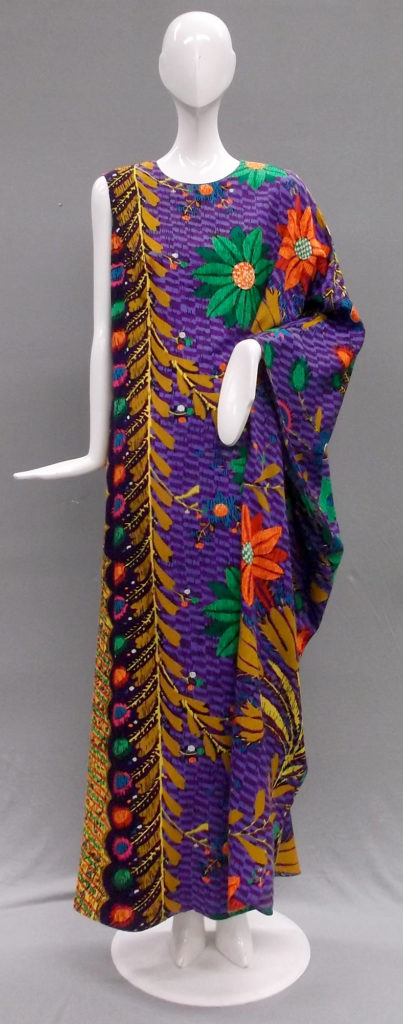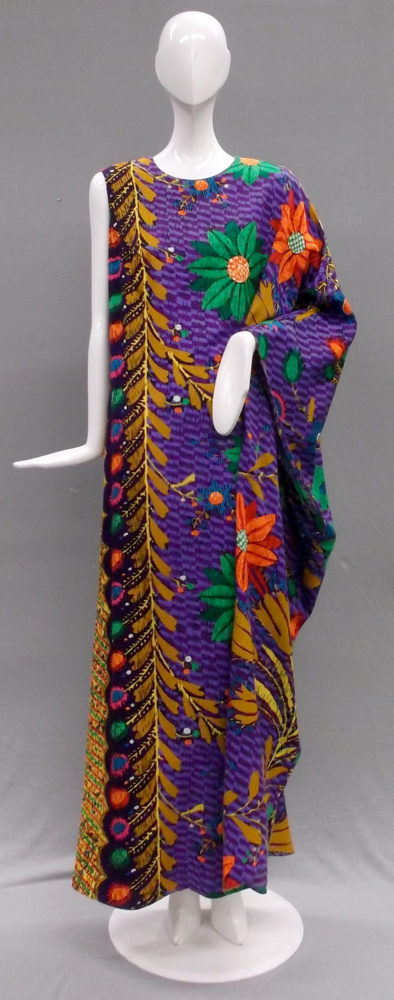The colorful Hawaiian Muumuu

The Hawaiian Muumuu is an example of how fashion can change due to outside forces.
This week on Piece of the Week, I focus on the Hawaiian caftan; most commonly known as the muumuu. Like many clothing, the history of the muumuu is interesting and can be traced back to the introductory period of two cultures.
The muumuu was introduced to Hawaii by Christian Protestant missionaries during the 1820s. As one could deduce, the missionaries were not pleased with the island attire worn. Women wore a pa’u, similar to a hula skirt, and a kihei, a type of shawl.
Due to the tropical climate, not much was worn beside the pa’u and kihei. What missionaries introduced was a two-piece ensemble, which consisted of a floor-length skirt and loose-fitting shirt. Over time, the separate pieces were combined, and a lighter material was used, to create an appropriate tropical dress.
The muumuu at the Emily Reynolds Historic Costume Collection consists of an overall deep purple base with green, orange and gold floral print and a sleeveless right arm. It is with deep sorrow that I write that this piece was Found in Collection, meaning that we don’t know its history or when it was used. There was a label indicating its designer, Kiyomi Hirose. Hirose’s designs were a combination of Asian, predominantly Japanese styles, and Hawaiian.
Today the muumuu is a diverse part of the Hawaiian culture. As well as being worn on a day-to-day basis, the ensemble has been incorporated into wedding ceremonies and Sunday church services. Brides will switch up the typical colorful themes of the dress into the formal white.
Not only does the bride wear a muumuu, but bridesmaids will also incorporate the traditional dress. On such a significant day, it’s awesome to witness how certain traditions are kept and transformed into different ways. The incorporation of the item from daily wear to ceremonial exhibits the sentimental relationship clothing can have to a culture.
